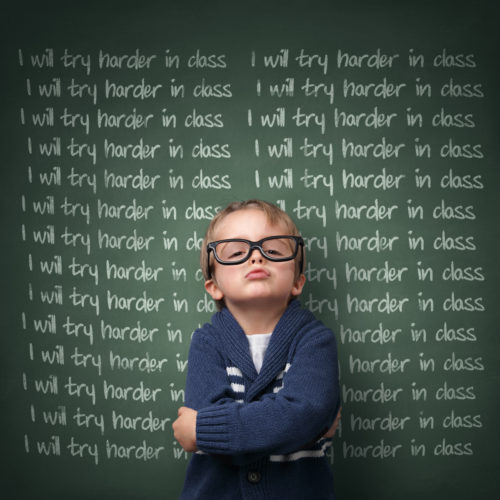By: Tracy McConaghie, LCSW, RPT/S
1. Specific, sincere positive acknowledgment is far more effective than punishment strategies. Negative reinforcement or punishment works short term at best, but does not teach the child what to do or how to improve the problem. Comments should focus on what the child did right and exactly what they did. For example, rather than “you did not disrupt the class”, state exactly what desired behavior occurred.
Vary positive comments – the same thing said over and over can lose its value.
Be sincere- children know when you do not really mean or believe what you say.
2. Selectively ignore some inappropriate behavior. Every single misbehavior does not have to be addressed, and when it is it results in a great deal of discouragement in children. Remember, children do better when they feel better and worse when they feel worse.
3. Set up secret signals between you and the child. This is a way of redirecting that is supportive and does not result in the embarrassment that frequent calling out in class does. Plan with the child what the signal will be and what it means.
4. Plan seating and line arrangements carefully to reduce problems.
5. Spend time talking with the child about things other than school – one of the best predictors of how well a child does in school is if they believe their teacher likes them.
6. Provide calming manipulative such as play dough, stress balls, etc. These provide needed sensory input that can increase attention, and they keep hands busy.
7. Allow for breaks – ask the child frequently to run errands or do jobs in the classroom. This not only provides needed breaks, but also increases the sense of capability and contribution to the classroom.
8. Children can not thrive without a physical break during the day, and this is particularly true for children with ADHD or other challenges. Do not remove recess time for misbehavior or unfinished work. If your school does not provide a good dose of recess in the middle of the day, create an activity time in your classroom – sit ups, push ups against the wall, stretches and yoga poses that are strenuous yet quiet, etc. Productivity will increase even though you take time for this.
9. Use non-verbal cues. For example, a firm hand on the shoulder, pointing to what needs to be done without talking, making eye contact.
10. Plan a routine for transitions. Help the child make a cue card with the steps for packing up and lining up, for example, and point to it on his or her desk when it is time for this step. Stay near the child during these transitions when possible to give coaching and reminders.

Tracy McConaghie and her husband Andrew McConaghie own McConaghie Counseling in Alpharetta. She specializes in helping children and families with divorce, parenting, anxiety and behavior problems. Andrew specializes in couples counseling, including divorce counseling. Both Andrew and Tracy help divorcing couples create successful parenting plans for their divorce. They are available for therapy or consultation in their office or via phone or video conferencing. You can also visit McConaghie Counseling online at www.mcconaghiecounseling.com.

